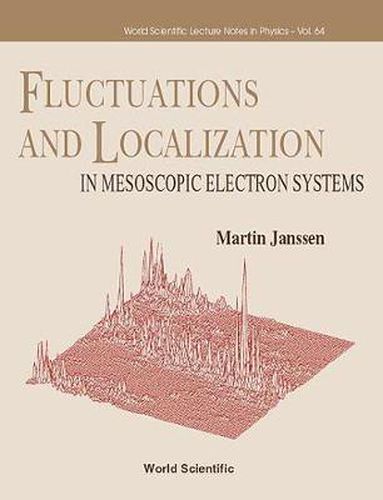Readings Newsletter
Become a Readings Member to make your shopping experience even easier.
Sign in or sign up for free!
You’re not far away from qualifying for FREE standard shipping within Australia
You’ve qualified for FREE standard shipping within Australia
The cart is loading…






The quantum phenomena of tunnelling and interference show up not only in the microscopic world of atoms and molecules, but also in cold materials of the real world, such as metals and semiconductors. Though not fully macroscopic, such mesoscopic systems contain a huge number of particles, and the holistic nature of quantum mechanics becomes evident already in simple electronic measurements. The measured quantity fluctuates as a function of applied fields in an unpredictable, yet reproducible way. Despite this fingerprint character of fluctuations, their statistical properties are universal, ie. they are the same for a large class of different mesoscopic systems, having only very few parameters in common. Localization of electrons is a dramatic effect of destructive interference. As a consequence a metal can become an insulator while reaching mesoscopic scales. Based on elementary quantum and statistical physics, this text introduces the theory of mesoscopic electron systems. It focuses on universal characteristics of fluctuations and on the localization mechanism. General concepts and methods are stressed, such as scaling laws for distribution functions. Tools from condensed matter theory are used flexibly. Involved technical details are skipped so as to present a broad overview of the field, including topics like quantum dots, the quantum Hall effect and a number of the most recent developments.
$9.00 standard shipping within Australia
FREE standard shipping within Australia for orders over $100.00
Express & International shipping calculated at checkout
The quantum phenomena of tunnelling and interference show up not only in the microscopic world of atoms and molecules, but also in cold materials of the real world, such as metals and semiconductors. Though not fully macroscopic, such mesoscopic systems contain a huge number of particles, and the holistic nature of quantum mechanics becomes evident already in simple electronic measurements. The measured quantity fluctuates as a function of applied fields in an unpredictable, yet reproducible way. Despite this fingerprint character of fluctuations, their statistical properties are universal, ie. they are the same for a large class of different mesoscopic systems, having only very few parameters in common. Localization of electrons is a dramatic effect of destructive interference. As a consequence a metal can become an insulator while reaching mesoscopic scales. Based on elementary quantum and statistical physics, this text introduces the theory of mesoscopic electron systems. It focuses on universal characteristics of fluctuations and on the localization mechanism. General concepts and methods are stressed, such as scaling laws for distribution functions. Tools from condensed matter theory are used flexibly. Involved technical details are skipped so as to present a broad overview of the field, including topics like quantum dots, the quantum Hall effect and a number of the most recent developments.